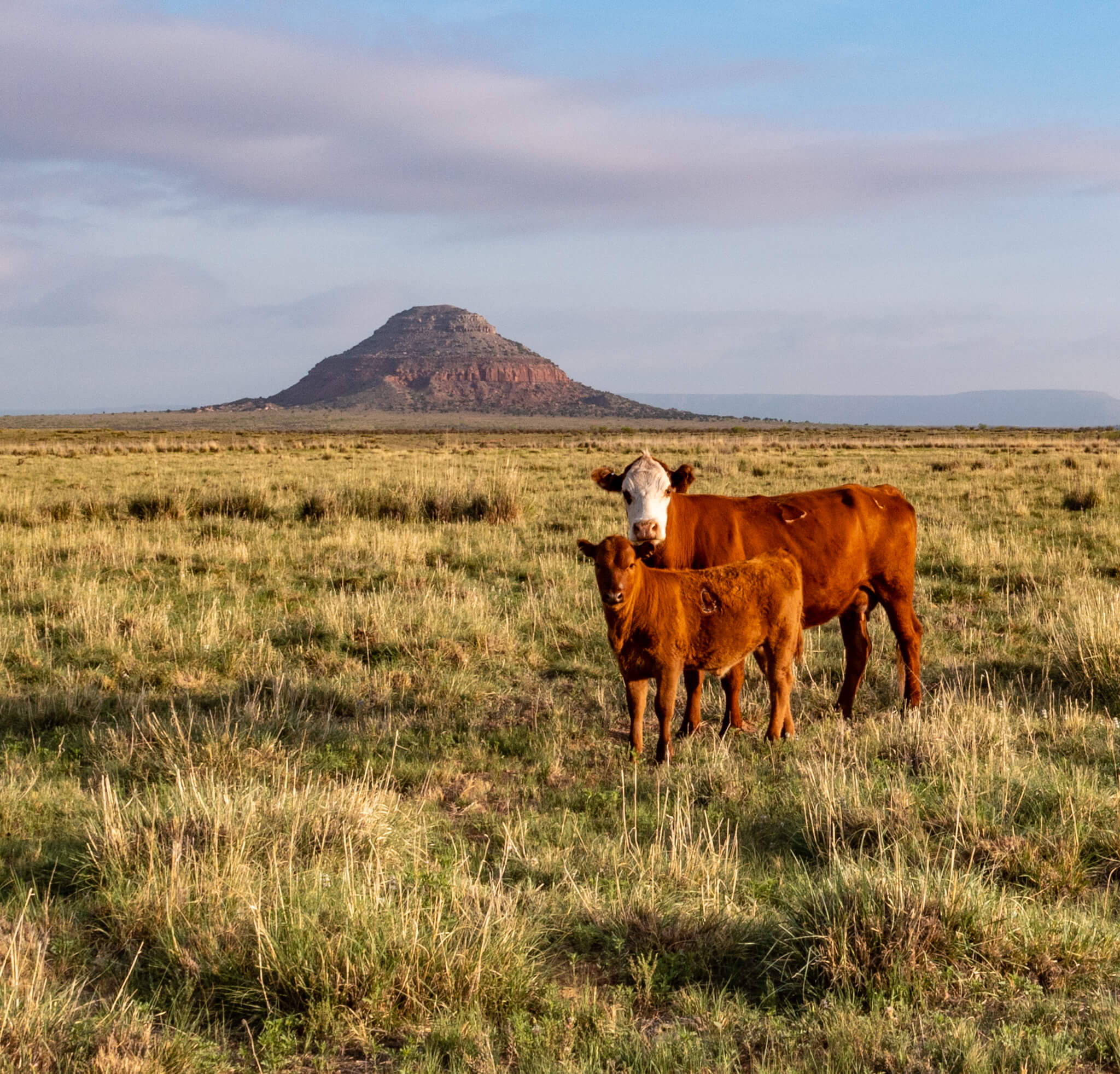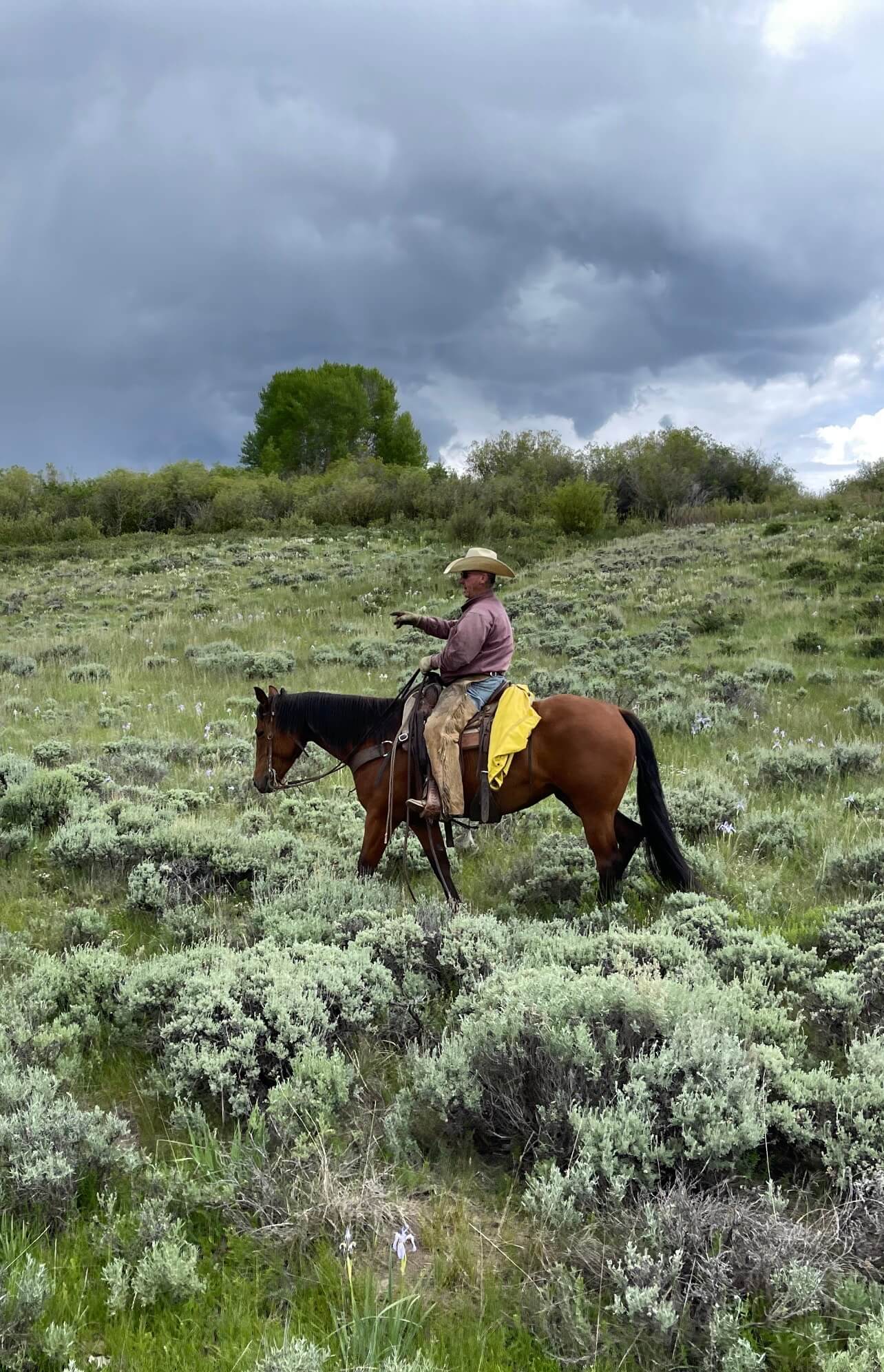The Story
The Bell Ranch originated from a 656,000-acre grant by Mexico to Don Pablo Montoya in 1824- nearly 200 years ago! Lying along LaCinta Creek and the Canadian River, part of the historic Bell is bordered by present day Conchas Lake. The Ranch’s 453 square miles contain rolling grasslands bordered by red rimrock canyons and magnificent mesas, including the bell-shaped mountain after which the Ranch was named and the distinctive brand was fashioned. This historic “single iron” brand was registered in San Miguel County in 1875 and has continued in use for 135 years.
Comanche, Kiowa and Apache tribes hunted buffalo and ground corn at strategic sites situated to scan huge horizons for friend and foe. Petroglyphs on the Bell indicate Native Americans may have lived there well before the 1500s. Subsequent Spanish rule was followed by loosely cobbled Mexican governance. Charles Goodnight, of the Goodnight-Loving Cattle Trail fame, rode to the top of a prominent mesa – the Gavilan – to see his way to Colorado and Wyoming while driving huge herds of Texas longhorn cattle through the region.
In 1947, the Ranch went through a significant division. The Headquarters and brand along with about 130,000 acres near the center of the Montoya Grant were retained while five other large tracts were sold off. This core was later purchased by Harriet Keeney of Connecticut. Historians recorded that before this division, the Bell was the largest single ranch in New Mexico and the largest all-deeded operation in the entire Southwest.
In 1970, the Keeney Tract was acquired by William N. Lane, II – Chairman and CEO of publicly-traded General Binding Corporation – an international manufacturer of office supplies and equipment based in Northbrook, Illinois. Over the next six years, Lane purchased additional tracts of the original grant and reassembled the Ranch to its present size. He died in a tragic car accident near the Ranch in 1978, and his oldest son, William N. Lane, III assumed leadership of the Lane Family businesses.
One of William N. Lane, II’s other sons, Jeff, came to the Bellin 1974 and initially managed the Ranch’s seed-stock operation. He and his wife, Janet, raised their family in this enchanting and growth-promoting environment. In August 2007, tragedy again beset the Lane Family as Jeff died in a small plane accident on the Bell.
Without the enthusiastic commitment and vision of the Lane Family over the past 40 years, the Bell Ranch would not have been preserved and enhanced and would certainly not afford the extraordinary combination of desirable elements for the next high-caliber owner to manage and enjoy.
The Bell Ranch’s beautiful grandeur and unique qualities have attracted notable artists and writers for many decades. Renowned Canadian artist, Robert Lougheed, visited the Ranch many times gaining inspiration from its horses, people and quiet places to create a significant body of work currently housed in the National Cowboy & Western Heritage Museum.
In the1940s, famed photographer Harvey Caplin recorded remarkable black and white images of the Ranch – one of which was printed on Stetson’s hat boxes for many years to portray the quintessential West. The 1950s television show “Rawhide” also captured the Ranch’s panoramas and many “Marlboro” advertising scenes of the 1970s were shot in the remarkable environs of the Bell. Additionally, the number of books and significant articles published about the Bell is quite extensive.
The Bell encompasses broad sweeps of some of the highest quality grassland in North America- reminiscent of the African Serengeti – unsullied by public access and possessing great potential for enhancement of wildlife habitat. This rare combination positions the Ranch as a strong candidate for placement of a truly meaningful, large-scale conservation easement.
While each one of the Ranch’s small number of owners has been remarkable, the men who have served as general managers since the 1930s have also distinguished themselves in the nation’s beef industry.
Albert Mitchell managed the Bell from 1933 to 1947. He served as President of the American Hereford Cattle Breeders Association, a member of the State House of Representatives, President of New Mexico’s Cattle Growers Association and a founder of the American Quarter Horse Association.
George Ellis – whose stewardship ran from 1947 to 1970 – established performance testing on the Ranch. His selection of purebred Hereford cattle laid the foundation for the Bell’s reputation as one of the most significant ranches in the nation.
Don Hofman was hired by Bill Lane in 1970 and held the Bell’s reins until 1986. He possessed a unique “cow-sense” and developed livestock water, implemented additional cross-fencing for better grass management, and constructed highly efficient cattle-handling facilities. He oversaw the large growth of the Ranch’s herd size as the Ranch expanded from Lane’s many acquisitions.
Rusty Tinnin was lured from a large Texas ranch by the Bell’s extraordinary reputation and challenging responsibilities in 1986. His experience and personality matched the Ranch’s leading position in the cattle industry. In close cooperation with Jeff Lane, he moved a fine cattle herd to a higher level by developing the Red Bell composite breed. His death in early 2006 shocked the nation’s fraternity of leading cattlemen.
Bert Ancell came to the Bell as a young man nearly 41 years ago and in short order became the “wagon boss” – a position critical to the success of large ranches in the Southwest. Ancell served as assistant manager under Rusty Tinnin and was named general manager in 2006.He possesses a strong grasp of the Ranch’s operation and an innate ability to work closely with its owners. In January 2010, he was installed as President of the New Mexico Cattle Growers Association for a two year term.


leave a comment!
Comments